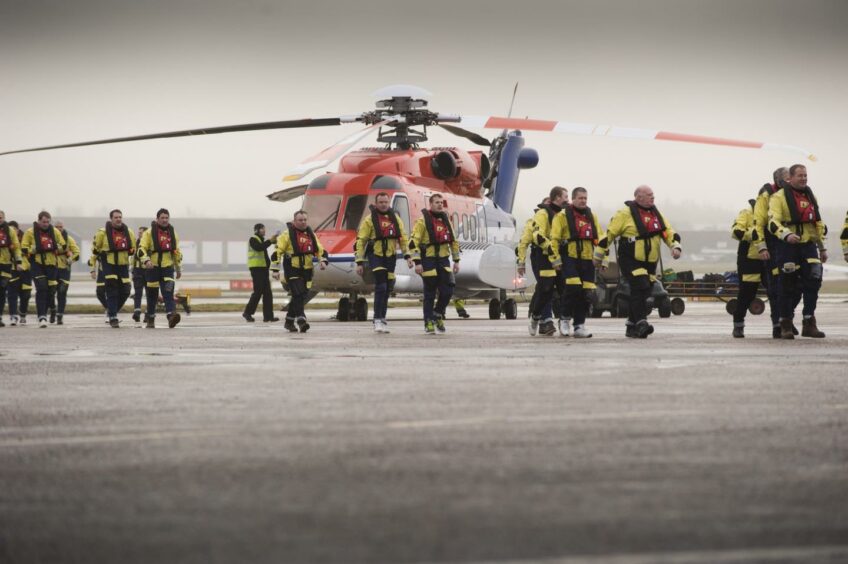
The annual number of people making offshore trips to the UK North Sea is down by 10,000 compared to 2019, according to a new report.
Total number of “offshore travellers” has dropped by roughly a fifth to 38,933 in 2022, according to Offshore Energies UK’s (OEUK) new workforce insight report, compared to 49,268 in 2019.
Although the industry had sweeping job cuts during the intervening years of Covid-19, the trade body suggested new technologies may be the cause.
“Non-core” travellers are down by a quarter – almost 6,700 – since 2019, from 26,346 to 19,684.
OEUK said this is “likely to reflect fewer non-essential offshore trips taking place and may also be a sign that new technologies – such as use of drones – mean that fewer offshore visits are necessary”.
Meanwhile “core” workers are down to 19,249, compared to nearly 23,000 in 2019. In 2022, however, numbers were up 2,000 on the prior year, which was impacted by Covid.
In 2020 35,000 UK jobs supported by the oil and gas industry were lost as Covid and volatile prices hit the sector.
The report comes as the Just Transition Commission in Scotland has outlined that the county is not delivering a just transition for workers in traditional energy roles.
RMT Union’s general secretary, Mick Lynch, said following the commission’s findings: “We urgently need to head off potential job losses in offshore oil and gas through a combination of pro-public procurement, resilient public transport networks and a digital training passport that works for our members and not one sector of industry.”
Last year ultimately saw an average of 9,276 people working offshore at any given time.
Workforce breakdown: Who’s working offshore?
The Workforce Insight Report shows that of the nearly 39,000 workers in UK waters 87% live in the UK.
Of those living in the UK 30% are based in Aberdeen, or 10,161, and 61% live in Scotland (21,137).
OEUK found the average age of an offshore worker to be 44 years old with core workers averaging out at 45 and non-core staff being 43.
This shows that overall, the average age of the North Sea workforce has gone down slightly since the trade body’s last report.
Previous figures showed the average age in UK waters was 45 overall, with 46 for core and 45 for non-core.
The Central North Sea was found to hold the majority of work in UK waters with 52% of roles being based in the region.
Just under a quarter of the workforce were found to operate across multiple regions.
The central North Sea is home to 70% of UK fields with 55% of total offshore oil and gas production in the country coming from the area.
Recommended for you
